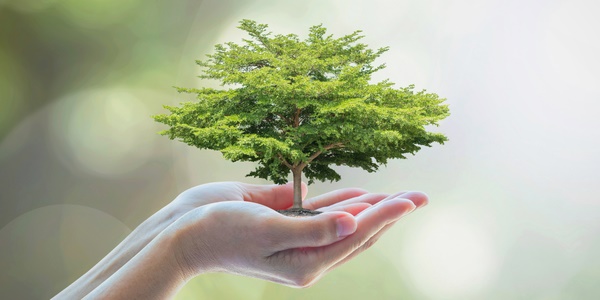Sustainability is not only a buzzword, it’s also a new way of doing business, with an aim to create positive change for people and the environment. Marrying sustainability with cosmetics, a growing and profitable product category, has great potential, for profitable business and for environmental good. However, the industry is still exploring the meaning and possibilities of this new union.
Quite a few brands have started their exploration of this area with consideration towards packaging, given the media attention towards plastic and interesting initiatives like the ocean clean up in the Pacific. Packaging is highly visual and easy to understand and even if it has a great environmental impact, when it comes to sustainable cosmetics, focusing on just the outward form is simply not enough.
Sustainability is a demanding partner and it has a substantial list of requirements before the happy union will take place for credible and long-lasting solutions. So where do we need to focus and what do we need to measure?
The sourcing of raw materials and considering their impact on the environment, before and after they are used by consumers, is quite a complex matter. However, this is exactly where we must start.
Do we use plant-derived ingredients or petrochemicals, or hybrids? Plant-derived ingredients require more resources and energy than petrochemical ones, but they are renewable and have more consumer appeal. Using plant ingredients means increasing demand on and for natural resources, so what green technologies can we use to reduce the environmental impact? How can we get to know the supply chain behind the cosmetic ingredients we use in order to select raw material suppliers more in line with sustainability both for the environment, the animal kingdom, and for the human populations that live and have to be sustainably economically productive in these environments?
The manufacturing aspect of cosmetics is another important area to focus on. Cold processing has gained popularity, along with clean energy like wind and solar energy. Formulating with a mind to save on energy and water is also a growing trend, with some big names promoting the use and marketing of more concentrated products that use less water. There are even smaller brands promoting the concept of water-free products, which are getting positive responses, especially amongst younger consumers.
Sustainability is complex yet beautiful in its multiple expressions and has a wide view that takes in the entire cosmetics supply chain including the actions and behaviours of its consumers. It requires an increasingly nuanced and deeper understanding by the industry of the raw materials supply chain, and of processing as well as thinking about the bigger picture on the part of the broad themes of sustainability and the green revolution. There is no one way to go about it, the most important thing is to start the journey of exploration and innovation, like the great pioneers of the past.
Content provided by Dr Barbara Olioso MRSC, thegreenchemist.com, who will speak on The journey of sustainable cosmetics on 17 October from 12.45 to 13.30 at the Marketing Trends Theatre at in-cosmetics North America.

